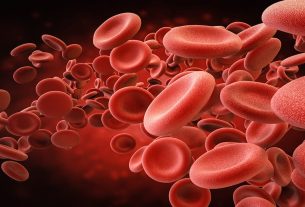To control a panic attack or anxiety attacks, it is important to breathe deeply, go to a place where the person feels safe and, if possible, get some fresh air, always trying to remain calm. Furthermore, it is also very important not to focus your attention on the anxiety, discomfort, nausea, agitation and tremors that you may be feeling, as this will allow you to relax more easily.
A panic attack is a physical phenomenon that occurs due to an extreme level of anxiety, which is why it is very important to recognize early on the first symptoms that usually appear, such as diarrhea, agitation, irritation, palpitations, chest pain, heat and sudden sweating. or feeling short of breath. Learn about other symptoms that this syndrome can cause.

What to do to overcome a panic attack
To overcome a panic attack, it is important to be able to control your anxiety and not despair, and it is important to:
- Quickly look for a place where the person feels safe or a cool, calm place;
- Sit wherever possible;
- Close your eyes, inhale deeply and exhale slowly through your mouth, repeating this for a few minutes;
- Try to remain calm and positive, believing that the symptoms and discomfort will pass quickly;
- Take the medicine prescribed by your doctor to treat panic attacks, if you are already taking treatment.
Furthermore, if you have someone you can tell that you are having a panic attack, you should do so, as that person will be able to help you calm down and deal with the whole situation better.
How to treat panic syndrome
To find out if the person has an anxiety disorder that causes the crises, it is important that the person consults a psychiatrist, who will carry out a diagnosis and recommend the best treatment. Generally, panic syndrome is treated with behavioral therapy and psychotherapy carried out by a psychologist, which will not only help to control the symptoms, but also help to reduce the number of crises over a period of time.
In addition, the doctor may also recommend treatment with medications that help calm and control crises, such as antidepressants and in some cases benzodiazepines, which should only be taken under medical advice.
There are also some natural remedies or teas made from valerian, passion fruit or St. John’s Wort that can be used to naturally complement the treatment for panic syndrome, and it is important that they are recommended by your doctor. See how the natural treatment for panic syndrome is done.
Food to control stress and anxiety
Treatment for panic syndrome can also be complemented through diet, as drinking orange and passion fruit juice with brewer’s yeast a day helps to calm and balance the neurological system, improving the body’s response to stress and anxiety.
See, in the following video, how food can help reduce stress and control anxiety:
Furthermore, a diet rich in antioxidant foods such as tomatoes, açaí, strawberries, kale, broccoli or pomegranate, for example, helps to reduce the negative effects that excess stress, nervousness and anxiety can cause in the body.
What to do to avoid panic attacks
To prevent the emergence of panic attacks, there are some tips that may be useful, such as:
- Avoid stress or environments that cause stress and anxiety;
- Whenever possible, go out in the company of someone with whom you feel safe and comfortable;
- Avoid places with lots of people, such as shows, theaters or public transport, for example;
- Avoid drinking drinks that stimulate the nervous system such as caffeine, green, black or mate tea, alcoholic or energy drinks;
- Avoid activities that increase anxiety, such as watching a suspense or horror film, for example;
- Practice activities that teach you to relax, such as yoga or pilates, for example.
Furthermore, to control panic attacks, the most important thing is to try to eliminate the idea that you are going to feel fear or panic, as the presence of these thoughts is one of the reasons that leads to increased anxiety and the onset of attacks. See how to identify and control an attack early on.
Bibliography
- MINISTRY OF HEALTH. Clinical Practice Guideline for the Management of Patients with Anxiety Disorders in Primary Care. 2018. Available at: <https://portal.guiasalud.es/wp-content/uploads/2018/12/GPC_430_Ansiedad_Lain_Entr_compl.pdf>. Accessed on Aug 31, 2021
- NARDONE, GIORGIO. Panic attack therapy. 2016. Available at: <http://www.untumbes.edu.pe/vcs/biblioteca/document/varioslibros/1080.%20La%20terapia%20de%20los%20ataques%20de%20p%C3%A1nico.%20Libres% 20para%20siempre%20del%20miedo%20patol%C3%B3gico.pdf>. Accessed on Aug 31, 2021
- American Psychiatric Association. Diagnostic and statistical manual of mental disorders. 5.ed. Portugal: Climepsi, 2013.

Sign up for our newsletter and stay up to date with exclusive news
that can transform your routine!
Warning: Undefined array key "title" in /home/storelat/public_html/wp-content/plugins/link-whisper-premium/templates/frontend/related-posts.php on line 12
Warning: Undefined array key "title_tag" in /home/storelat/public_html/wp-content/plugins/link-whisper-premium/templates/frontend/related-posts.php on line 13




